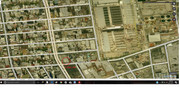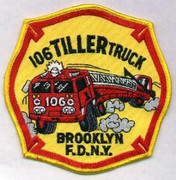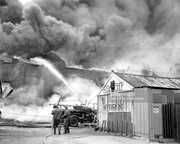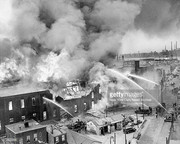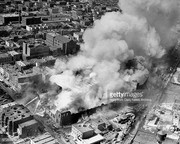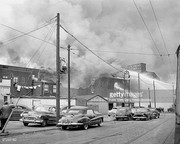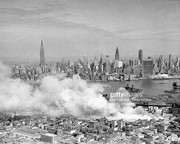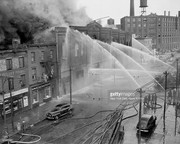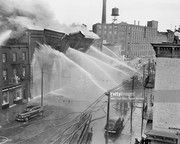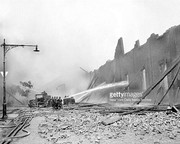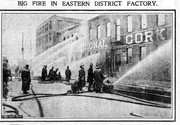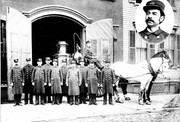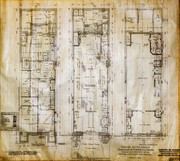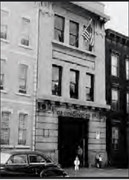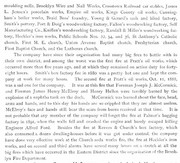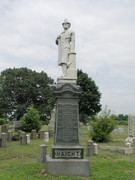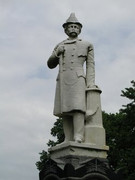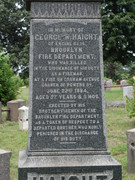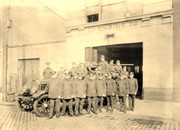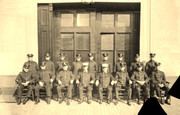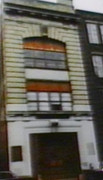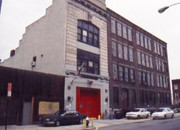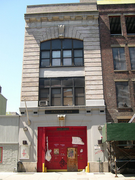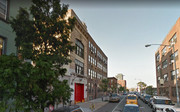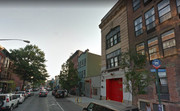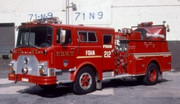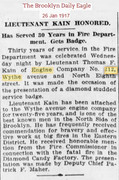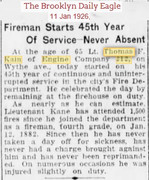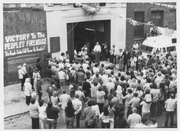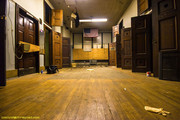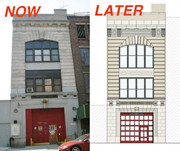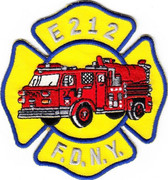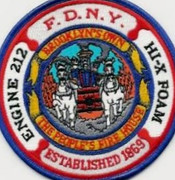Engine 238/Ladder 106 Firehouse 205 Greenpoint Avenue Greenpoint, Brooklyn 11th Division, 28th Battalion "Greenpoint" "The Tiller Truck"
Engine 38 BFD organized 176 Norman Avenue 1895
Engine 38 BFD became Engine 38 FDNY 1898
Engine 38 became Engine 138 1899
Engine 138 became Engine 238 1913
Engine 238 new firehouse w/Ladder 106 1972
Ladder 6 BFD organized 124 Greenpoint Avenue former volunteer firehouse 1869
Ladder 6 BFD relocated to unknown location while new quarters built approx 1878
Ladder 6 BFD new firehouse 124 Greenpoint Avenue 1880
Ladder 6 BFD became Ladder 6 FDNY 1898
Ladder 6 became Ladder 56 1899
Ladder 56 moved 683 Leonard Street 1908
Ladder 56 new firehouse 124 Greenpoint Avenue 1910
Ladder 56 became Ladder 106 1913
Ladder 106 new firehouse 205 Greenpoint Avenue w/Engine 238 1972
Battalion 36 organized 176 Norman Avenue at Engine 138 1906
Battalion 36 new firehouse 205 Greenpoint Avenue w/Engine 238 1972
Battalion 36 disbanded 1975
Foam Tender organized 205 Greenpoint Avenue at Engine 238 1994
Ladder 6 BFD history:
Ladder 6 BFD organized at former firehouse of volunteer Valley Forge Engine 11 and Excelsior Ladder 4 at 124 Greenpoint Avenue. Firehouse was razed and Brooklyn Fire Department built a new firehouse in 1880 for Ladder 6. FDNY then built another firehouse at the same location for Ladder 56 which then became Ladder 106.
Ladder 6 BFD history: "One of the first truck companies to be equipped when the Department went into active operation in 1869 was Hook and ladder Company No. 6, and the changes in officers and men since the first time the truck rolled out of the house have been many. The company's quarters are on Greenpoint Avenue near Manhattan Avenue, Greenpoint, and the house which was rebuilt in the '80's is on the site of one occupied by "Valley Forge" Engine 11, of the Volunteer Department. Among those who make up the present company are men who have saved human life and others who have been injured while in the discharge of duty. All have seen hardship since they have entered the service, and not a few have been place in perilous positions from which they escaped fortunately without a scar. There have been brave, fearless men connected with this company in times past, who while battling with smoke and flame went down beneath falling wall and sere crushed and burned beyond all possible recognition. There are still others who yet carry scars upon their faces and hands to tell of fierce conflict with the destroyer of life and property. The interior of the truck house is comfortable, the apparatus is equipped with all the modern appliances for life-saving, and the team which pulls it is made up pf a sorrel and a roan, and both
young and powerful specimens of fire horses. The company on a first-alarm responds to calls from 48 boxes and on a second-alarm to 45 additional. The territory covered by them on a first- alarm is bounded by Newtown Creek, Kingsland Avenue and Wither Street, North Ninth Street and by the East River and Newtown Creek.
Among the large manufacturing establishments in the district are the Kings County oil works, Logwood Works, Smith's box factory, Ward's paper box factory, New York Stamping Company, the Havemeyer sugar works, Orr & Company's lumber yard, Faber's pencil works, Heckler iron works, Smith's American Porcelain Company, Jensen's porcelain works, Reeves & Church's box factory and lumber yard, New York wire and nail factory, Chelsea jute mills, Crosstown car stables, Kent Avenue car stables, Adler veneering and cane seat factory, Leary's ship-yard, Storm's planning mill, two large sash and blind factories belonging to Young & Gerard, Refrigerator Manufacturing Company foot of Guernsey Street, the Rutherford soap works and McCaifrey & Jacob's varnish works.
The company has done active service at all the big fires in Greenpoint and the Eastern District since its organization, and the Herseman bakery fire will ever be fresh in their minds, for it was there that Jonathan Tyack, then Acting Foreman, and George Haight, temporarily detailed to the company, lost their lives beneath the falling walls. At Pratt's oil works fire on Oct.11, 1888, where Foreman Joseph J. McCormick, James McElroy and Henry Hellen of Engine Company No. 15, were severely burned, they worked for twenty hours without intermission. They were present and did
active duty at the Reeves & Church's box factory fire, at Havemeyer's sugar refinery, South Third Street and Kent Avenue, at Church's soda works in 1891, at Heckler's iron works in 1891, and at Palmer's bagging factory fire at the foot of North Seventh Street at which fire Engine No.15 was burned up, and several firemen had a narrow escape from being crushed by falling walls.
Foreman STEPHEN ALLEN was born in the city of New York, Aug. 13, 1853, and was appointed a fireman on May 28, 1880. He rose from the ranks step by step, an4 on March 1, 1887, was made Assistant Foreman. On July 1, 1889, he was promoted to the grade of Foreman. During the period of service in the Department and prior to being put in command of Hook and Ladder No. 5, he did active duty with Hook and Ladder Companies Nos. 4 and 8 and Engine Company No.12. At the Herseman bakery fire, on June 22, 1883, he was so badly burned about the face and body and bruised on the back and legs by falling walls, that he was laid up for nearly six months Mr. Allen is a bachelor and lives at No.638 Leonard Street.
Assistant Foreman FRANCIS C. SPILLANE was born in New York City, on Sept. 9, 1861. He is a bachelor and resides at No.308 Lorimer Street. When appointed to the force, Feb. 16, 1884, he was assigned to duty with Truck No.6, where he has since remained. He was made an Assistant Foreman on July 1, 1889.
CORNELIUS CUNNINGHAM was born at Lyons Falls, Lewis County NY, on September 15, (1856). He was appointed to the Department on Oct. 15, 1886 among the life-savers. On Oct. 23, 1888, a fire occurred at No. three-story and attic building. In the attic lived John Gravesmuller, who had but one leg. Cunningham was sent up the ladder to search the attic and while thus engaged, and being almost exhausted by the dense, smoke, he stumbled over the cripple. Cunnningham seized the unconscious man and dragged him to the window, where a rope was let down from the roof, by which Gravesmuller was lowered to the ground, but he died five weeks later at the Long Island College Hospital. Mr. Cunningham is married and lives at No.219 Twentieth Street.
PATRICK MURRAY is the driver of the truck. He was born 43 years ago in Ireland, and was appointed a fireman on March 8, 1888. He served 3 years in the United States Navy, and in the Volunteer Department days was attached to Ridgewood Hose No.7.
JOHN CLUNIE was born in Glasgow, Scotland, Oct. 3, 1865, and of the uniformed force, July 21, 1890. He served seven years in the Navy, on board the "Minnesota," "Portsmouth," "Constitution," "New Hampshire", "Essex", "Powhattan" and "Wabash." He is a bachelor and lives at No.188 Kent Street
MICHAEL REARDON was injured some time ago by the breaking down of the apparatus while on the way to a fire, and he is now detailed to duty at the Bell tower. He was born in Ireland, Dec. 12, 1859, and was appointed to the force Mr. Reardon is married and lives at No.526 Lorimer Street.
THOMAS MCCAFFREY was born in 1832, in the city of New York a fireman since the date of the organization of the Department, and resides with his family, at No. 156 North Fourth Street. At present he is detailed the Sub-Office on South First Street. At the chalk factory fire on South Third Street in 1869, Mr. McCaffrey was standing on a ladder when the walls fell, with them and received severe injuries to his back. In the old volunteer days he ran with an engine company.
NORMAN HUGHES was born in the Fourteenth Ward, Williamsburg, Oct 3, 1850 and became a fireman May 8, 1874. While going to a fire he received a severe scalp wound and had his collar-bone broken by the breaking down of the apparatus. He is now doing duty as an operator at the Sub-Telephone Office.
JOHN CONNOLLY was born in Ireland, on March 10, 1845, and has been connected with the Fire Department since its organization, in 1869. Prior to that time he ran with Ridgewood Hose No.7. He is married and lives at No.123 Greenpoint Avenue.
JOHN F. MAHER was born in the County Tipperrary, in 1867, and became a fireman on March 12, 1891. He lives at No.571 Driggs Avenue.
GEORGE F. MCGEARY was born in this city on July 26, 1860 and received his appointment Dec. 15, 1885. He was burned severely about the face at a fire at the foot of Manhattan Avenue, a few years ago. He lives with his family, at No. 382 Leonard Street.
EUGENE J. MCKENNA was born in New York City on Oct. 16, 1865, and was appointed to the uniformed force on Nov. 15, 1891.
MICHAEL S. QUINN was born in this city, March 20, 1842. He served in the late with the 47th Brooklyn Regiment, and became a fireman Jan.31, 1882. He is a widower and lives at No.199 Green Street.
MICHAEL O'KEEFE was born in New York City, July 14, 1855, and on Jan.31, 1882, became a fireman. At the fire at Pratt's oil works, on Oct. 18, 1888, he was severely burned about the face and hands. Mr. O'Keefe is married and lives at No.138 North Eighth Street.
CHARLES MCCONEGHY was born in this city, on Sept. 16, 1865. He is a bachelor and lives at No.159 Meserole Avenue. His appointment is dated Oct.29, 1890.
Engine 238 176 Norman Ave former firehouse:
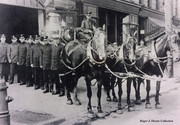


Engine 238 Norman Avenue firehouse history:
http://www.atlasobscura.com/places/brooklyn-fire-department-house-on-norman-avenue
Ladder 56 (Ladder 106) 124 Greenpoint Avenue former BFD firehouse built 1910:




Engine 238/Ladder 106 205 Greenpoint Avenue firehouse built 1972:
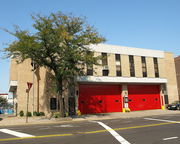




Engine 238:


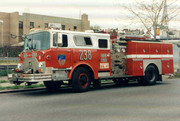

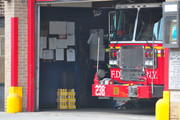

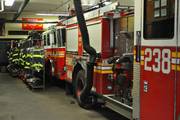

Ladder 106:
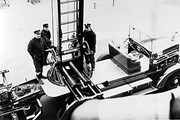
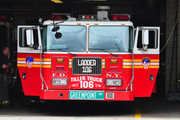
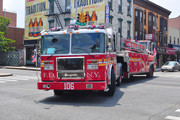
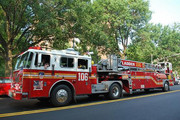
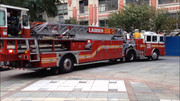
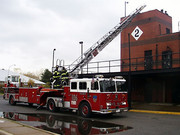
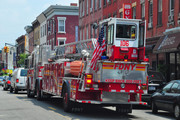
Foam Tender:
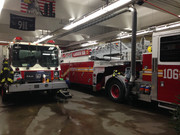
Engine 238/Ladder 106:
https://www.youtube.com/watch?v=4UyZ7EEzGV8
Engine 238 Responding
https://www.youtube.com/watch?v=HcdZHoyuV9Y
https://www.youtube.com/watch?v=PhR4DkxuSnY
http://nyfd.com/brooklyn_ladders/ladder_106.html
Engine 238 Medals:
FF Charles B. Helmoltz April 24, 1912, awarded 1913 Hurley Medal
FF Helmoltz rescued 22 year old woman from a 3rd floor apartment fire at 479 Metropolitan Avenue, April 24, 1912. Fire was reported at 1:05 AM.

CAPT Michael F. Conley, awarded 1923 Stephenson Medal
FF August V. Beck February 12, 1927, awarded 1928 Brooklyn Citizens Medal
Ladder 106 Medals:
LT John J. Rakers, Jr. June 1, 1937, awarded 1938 La Guardia Medal
Rescued FF John F. Herbst, Ladder 106, Driggs Avenue tenement fire

FF John F. Herbst, June 1, 1937, awarded 1938 McElligott Medal
Rescued Andrew Kivatowski at 178 Driggs Avenue tenement fire.


FF John F. Herbst, January 30, 1938, awarded 1939 La Guardia Medal McElligott Medal

FF Richard W. Schultz, February 1, 1940, awarded 1941 Dougherty Medal
Rescue of family at 115 Calyer Street after oil stove explosion

FF Louis J. Griffin, February 1, 1940, awarded 1941 Johnson Medal
Rescue of family at 115 Calyer Street after oil stove explosion
FF Francis P. O'Hara, February 1, 1940, awarded 1941 Delehanty Medal
Rescue of family at 115 Calyer Street after oil stove explosion
FF Robert J. Varese, March 17, 1987, awarded 1988 Fire Bell Club Medal
FF Raymond W. Mayr, March 17, 1987, awarded 1988 Third Alarm Association Medal
FF Eugene J. Marshal, March 17, 1987, awarded 1988 Signal 77 Medal
Engine 238 LODDs:
FF Christopher Drissel, January 31, 1904
FF Arthur J. Rank, January 31, 1904
FF Peter J. Gaffney, February 1, 1904
Greenpoint 1904 Jute Mill Fire:

FF Richard P. Gifford, October 26, 1962
FF George J. Zahn, October 26, 1962
Queens box 5027 was transmitted at 2133 for a fire at the Sefu Soap and Fat Co., at 44-15 56th Road in Maspeth. 4 alarms had been transmitted for the 2 story brick factory. The fire was declared under control at 2242. Approximately 20 members were overhauling underneath a loading shed when a wall and ceiling collapsed without warning. The dead and injured firemen were buried in 6 feet of debris. Firemen Richard Andrews, James Marino, Captain William Russell of Engine 325,
Firemen Richard Gifford, George Zahn of Engine 238 and Fireman Francis Egan of Ladder 115, were killed.

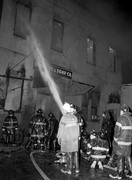
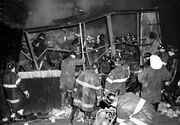
"The fire broke out from an unknown cause around 9 p.m. in the two-story brick, 73-by-50-foot building housing the Sefu Fat and Soap Co.
The four-alarm fire was brought under control at 10:50 p.m., and shortly thereafter the wall fell. A fifth alarm was sounded to bring emergency equipment to the scene. Firemen were walking in and out of the first floor of the building from a loading platform outside. Then a voice cried out: "Look out, there goes ......" The sentence was never finished. The wall and ceiling tumbled down, burying the fireman under tons of bricks and other debris." - Charleston Daily Mail West Virginia 1962-10-27
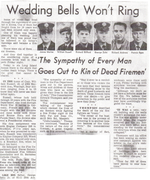

LT Glenn Wilkenson, September 11, 2001
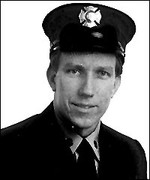

https://www.firehero.org/fallen-firefighter/glenn-e-wilkinson/
Ladder 106 (Ladder 6 BFD) LODDs:
LT Jonathan Tyack, June 22, 1884
FF George W. Haight (detailed Ladder 6), June 22, 1984
Herseman Bakery Fire: "The fire started when a hot brick from one of the ovens on the second floor of Herseman's Bakery dropped to the floor below. It landed in the stable, igniting some hay. The fire gained headway before it was noticed. Workers went into the stables to release the forty-four horses but were driven back by the flames. Thirty-three of the horses were released, eleven were killed. Acting Foreman Jonathan Tyack and Fireman Stephen Allen and Firemen George W. Haight were ordered to add another section of hose to the line operating in the rear of the bakery. The three men entered the alleyway between the fire building and the adjoining building with the extra hose. The four walls of the building swayed before the roof fell in, pushing the walls out and burying the helpless firemen. Acting Foreman Tyack was found under six feet of bricks with his skull crushed. Fireman Haight was found badly burned. Fireman Allen was injured but escaped with only a broken leg when he was thrown into a doorway and through the door of the next building. Acting Foreman Tyack and Fireman Haight both lived on Meserole Avenue in the Greenpoint section of Brooklyn. Acting Forman Tyack was forty-five years old, was married and the father of four children. Fireman Haight lost his wife several weeks earlier; they left three children orphaned. The fire from the time it was discovered until the building collapsed was less than fifteen minutes." (From Cypress Hills webpage)

 http://www.findagrave.com/cgi-bin/fg.cgi?page=pv&GRid=93085299&PIpi=62970545
http://www.findagrave.com/cgi-bin/fg.cgi?page=pv&GRid=93085299&PIpi=62970545
FF Jeremiah Leoney, November 27, 1913
FF Jeremiah Leoney died as a result of injuries sustained November 24th, when he and several other F/Fs were caught under a collapsing wall at a fire in a chemical plant.
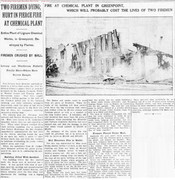
RIP. Never forget.
Greenpoint fires:
1879: Friday - November 21, 1879 - 3rd alarm - factory fire following explosion - Greenpoint Avenue & Milton Street - Brooklyn Fire Dept
1st alarm units: E 15, E 12, E 13, L6
2nd alarm units: E 11, E 16, E 18, L 4
3rd alarm units: E 17, L 2
Chief in command - Chief Nevins - acted "with accustomed coolness and daring"
Firefighters commended in press for "bravery and pluck"
1883 - Herseman Bakery - 2 LODDs (Fireman Jonathan Tyact Ladder 106 and Fireman
George Haight detailed Ladder 106 - crushed by falling wall
1898 - 4th alarm - Greenpoint jute factory blaze injures 5 firemen

1899 - Box 496 - two square blocks destroyed - E 15, E 12, E 38 L 6 first alarm companies
http://thehistorybox.com/ny_city/nycity_homeless_families_fire_greenpoint_1899_article00753.htm
1900 - Major factory fire
http://www.newyorkshitty.com/greenpoint-goodness/3734
1908 - International Cork Company factory fire
1919 - Standard Oil Plant fire - 20 acres - response over 40 engines - fire burned 4 days
1950 - Underground sewer gas explosion - October 6, 1950
https://greenpointers.com/2016/11/15/day-of-terror-in-1950-the-frightening-greenpoint-underground-explosion/
1952 - Boro call - June 30, 1952 - 5 dead

https://bklyn.newspapers.com/image/58061401/?terms=
1955 - Boro call 5/12/1955 at Brooklyn Box 290 - In about 30 minutes 5th Alarm plus TWO 3rd Alarm Boro Calls were transmitted - 77-290-66-33-760 FDR Drive & 41st Street and 77-290-99-33-9027 Queens Blvd & Broadway - (-thanks 811)
1965 - Boro call - 5 alarm Boro Call on 8/12/1965 - signal was 77-290-66-55-277 - the supply box Manhattan Box 277 is now Clinton & Delancey Sts, just across the Williamsburg Bridge (- thanks 811)
1979 - 3rd alarm - gasoline transfer facility - explosion and fire - Greenpoint Avenue and N Henry Street
2006 - 10 alarms Greenpoint Terminal Market
http://www.nydailynews.com/news/greenpoint-fire-gallery-1.19214#pmSlide=0
Greenpoint fire alarm boxes:
https://brooklynimbecile.wordpress.com/2011/06/28/the-red-fire-call-boxes-of-greenpoint/
Greenpoint:
http://www.boweryboyshistory.com/2016/02/greenpoint-brooklyn.html
http://forgotten-ny.com/2005/05/greenpoint-top-to-bottom/
